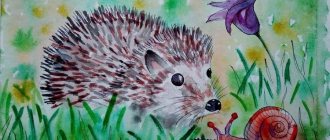Senior group
Games for older preschoolers should be aimed at developing logical thinking, speech, intelligence, curiosity, and perseverance. At this age, children must classify plants according to different characteristics, and preparation for school begins.
Turning into a flower
The game strengthens the facial muscles and promotes overall physical development.
Invite the students to use facial expressions and body movements to depict a flower, how it opens its petals, reaches out to the sunlight, bends its stem under the raindrops, and closes for the night.
Name the odd one out
For the game, prepare groups of cards: meadow species, forest, field, garden, water. There are 4 plants in each group, one of them does not correspond to the category. Lay out the cards in front of the players, ask them to name the extra type and explain their opinion.
For example: rose, tulip, clover, peony. Clover is not a garden plant, but a meadow plant.
Flowers
In addition to getting to know plants, the goal of the didactic game “Flowers” is physical training, developing dexterity and a sense of rhythm.
The children take turns playing. The player takes the ball, hits it on the floor or wall, catches it, and names a plant with each hit. He must name 5 species. You can't repeat yourself. If a player cannot remember the plant, then he gives the ball and the right to play to the next player.
Name the adjective
The game develops the skill of forming adjectives from nouns. Name the flower and the object. The player must name an adjective that is a qualitative attribute of this object:
- poppy, and the grain... poppy;
- chamomile, and the field... chamomile;
- a rose, and the bud... pink;
- acacia, and honey... acacia;
- cornflower, and the eyes... cornflower blue;
- dandelion, and the jam... dandelion.
Preparatory group
At this age, kindergarteners are preparing for school. They must have narration skills, tell from memory and visual material. It is important, with the help of games, to develop imagination, memory, spatial and color perception in future schoolchildren, to cultivate communication skills, a sense of beauty, the ability to build a dialogue, attentiveness, and perseverance.
What kind of flower are you?
Invite the students to “turn” into flowers. Each player chooses what kind of plant to become, but does not tell his comrades about it. Children take turns coming forward, depicting their flower using facial expressions and body movements, without uttering a word. The rest of the guys must guess what plant we are talking about.
Flower shop
For the game, prepare natural or artificial flowers. Children act as florists. The game is collective and teaches communication, teamwork, and organization.
The students make up a beautiful bouquet. Then they try to sell it to the teacher. At the same time, they must praise the bouquet, explain what plants were used, why they chose them, and for what purpose the flower arrangement is intended.
Flower names
The players form a circle. The teacher stands in the center, throws the ball to each child in turn, saying a name or an object named similar to a flower. The player who catches the ball must name the corresponding plant. For example: Vasily - cornflower, nail - carnation, Roman - chamomile, jug - water lily, Lilya - lily, Violetta - viola, toffee - iris. The player who finds it difficult to answer is eliminated from the circle.
Junior group
For younger preschoolers, simple educational, active and musical games are recommended.
Post a flower
Make two paper daisies for the game with the petals separated from the core. The number of petals must correspond to the number of players. Place daisies on the floor near the wall. Divide the students into 2 groups with an equal number of players.
Invite teams to move their daisy to the opposite wall. Each player transfers only one part of the plant: the first - the yellow core, the second - the petal, and so on. A player is not allowed to take two petals at once. The next participant starts moving when the previous one returns to the start. The team that collects its daisy first wins.
Collect a bouquet
Before playing, tell the children what parts flowers are made of: core, petals, stems and leaves. Cut out plant parts from colored paper and glue them into a bouquet arrangement, but do not glue the petals. Make petals of a certain color from the main spectrum for each flower. Tell the students that the wind tore off the petals, which now need to be selected according to the color for each plant in the bouquet.
You can also offer students a similar didactic game “Collect a flower.”
Bells
Children choose a leader by lot. He leaves the room. The players hide a picture depicting a blooming bell in the game room, disassemble the musical instruments themselves - small bells, and distribute them throughout the room. Moreover, one of the players must stand close to the hidden image.
The presenter enters the playroom, begins to walk around it, and approaches the children. When he approaches a player who is standing far from the picture, he does not ring the bell. When he approaches a participant standing closer to the picture, he makes a quiet ringing sound. The leader approaches the target even closer - the player makes a louder sound. The participant closest to the others rings the loudest. This way the presenter understands where to go in searching for the picture.
A flower is blooming
The game is educational. First tell the children how flowers bloom in nature. Prepare plant templates and distribute to students. Show how to curl the petals. Let the children put the flowers in a glass of water and observe what happens to the petals. When exposed to moisture, the petals will begin to “bloom.”





